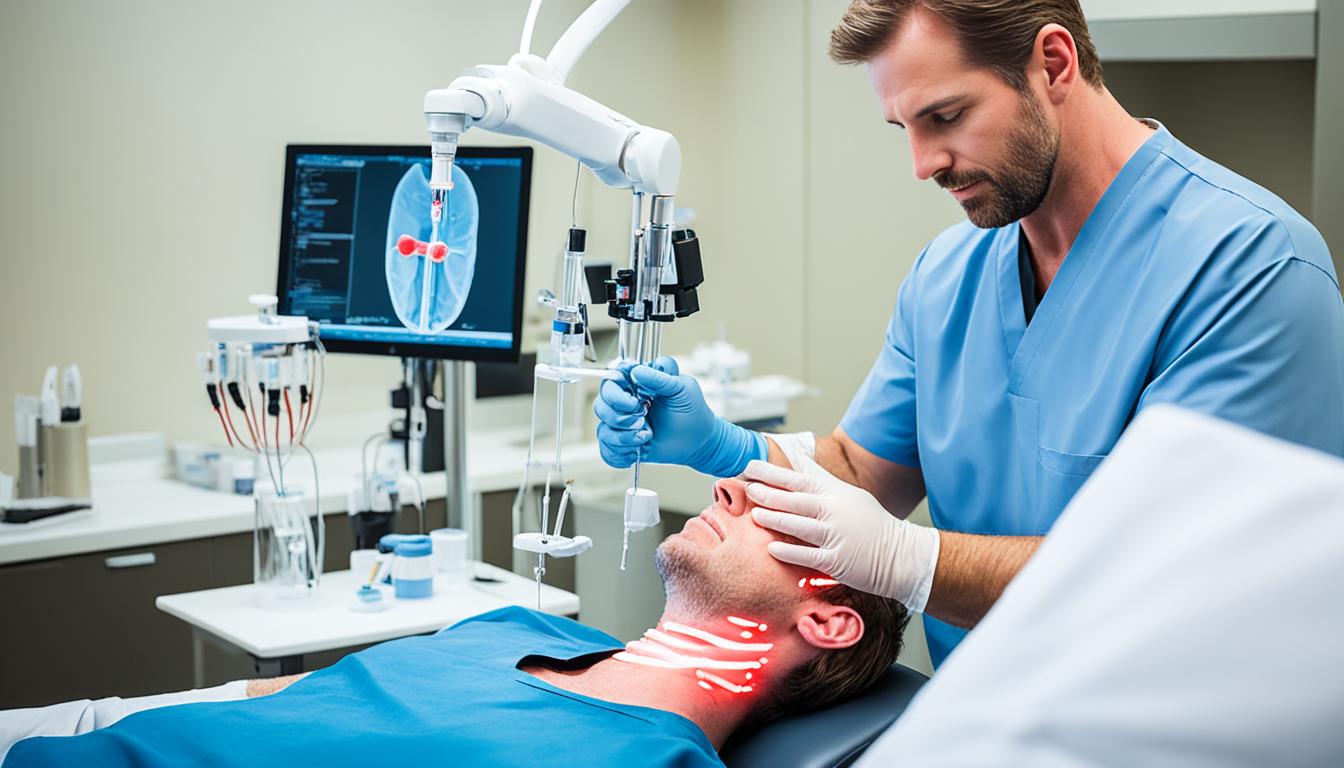Residual limb pain is a common issue for those who have had an amputation. It feels like pain is coming from the limb that’s no longer there. This pain can be mild or severe and last for different lengths of time.
Experts think this pain happens because of mixed signals in the brain and spinal cord. Things like nerve damage, pressure on nerves, or bone spurs can make the pain worse. It might feel like aching, burning, stabbing, tingling, or even throbbing in the missing limb.
Doctors diagnose it by looking at your medical history and doing a physical exam. They might also do some tests to check for other problems. Treatment can include pain medications, muscle relaxers, or even non-traditional therapies like acupuncture.
Key Takeaways:
- Residual limb pain, also known as phantom limb pain, is experienced in the missing or amputated limb.
- Causes of residual limb pain include nerve damage, pressure on a nerve, inflammation, infection, and poor blood flow.
- Symptoms of residual limb pain can include aching, burning, stabbing, tingling, and throbbing sensations.
- Treatment options for residual limb pain range from traditional pain relievers to non-traditional therapies like neurostimulation and acupuncture.
- Stem cell therapy is being explored as a potential treatment for residual limb pain due to its success in reducing chronic neuropathic pain.
Differentiating Phantom Limb Pain and Residual Limb Pain
It’s important to tell the difference between phantom limb pain and residual limb pain. Though they’re somewhat alike, knowing what sets them apart helps in the right care.
Phantom limb pain is felt in a missing or amputated limb. It’s a complex issue with feelings like the limb still exists. People may feel burning, stabbing, or tingling. Or, they might sense the limb is there even though it’s not. The cause isn’t fully clear, but it’s thought to be the brain getting mixed signals.
Residual limb pain happens in the limb part left after amputation. This pain might come from nerve damage or physical issues in the remaining limb. It can feel like aches, burns, or throbs. The pain’s location is key to telling it apart from phantom pain.
Effective Management Strategies
Managing limb pain needs many different efforts. For both types of pain, doctors might use medicines. This includes painkillers, antidepressants, or muscle relaxers. Non-traditional treatments, like TENS or acupuncture, can be helpful too.
Certains non-traditional therapies such as mirror box therapy have shown good results. Stem cell therapy is also looking like a hopeful option. It might help a lot, by healing and lessening chronic pain. This could make a big difference in someone’s life after amputation.
So, telling phantom limb pain from residual limb pain is critical. The first feels like the limb is still there, while the other hurts where it was cut. There are many ways to treat these pains. Each patient might need a mix of medicine, unusual therapies, and perhaps, stem cells. This tailored approach can really help people cope better and feel less pain.
Stem Cell Therapy for Residual Limb Pain
Stem cell therapy is showing great promise for those enduring residual limb pain. It’s effective in lessening chronic neuropathic pain. This helps both phantom limb pain and residual limb pain. The therapy works by making use of stem cells’ regenerative properties.
Specialized clinics in Thailand provide this therapy for residual limb pain. They focus on each patient’s unique needs and use advanced techniques. Although the field is still young, early signs and patient stories tell of good outcomes. These include less pain and a better life overall.
For those dealing with residual limb pain, thinking about stem cell therapy is a good idea. To see if this treatment could help you, talking with a medical expert is smart. Look for a reputable clinic in Thailand dedicated to this therapy.

